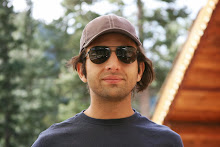With the table legs tapered, I glued up the 2 leg assemblies, trimming pegs on the way.
As much as I love driving home a drawbored peg, the real fun was only about to begin.
Up next I cut the dovetail joinery for the upper divider that sits right above the drawers, because of the length I had to be creative with how I clamped and cut out the tails.
You can see that there is also a tail placed in the doubler as well as the leg. While I had hoped to get an airtight fit, these are purely functionally and will be hidden under the top.
Below the upper divider is, oddly enough the lower divider attached with a triple tenon into the leg:
Position the divider and mark away! Follow up with the mortising and we now have both dividers ready to be marked out for the drawer partitions:
thats 3 dividers with 6 tenons a piece, 18 M&T's, the word slog comes to mind.
Domino in the kickers on the rear face of the dividers and half lap them into the upper/lower ledger and we are ready to put the drawer framework together:
I glue in the framework, along with the drawer guides,
the base is done.





































